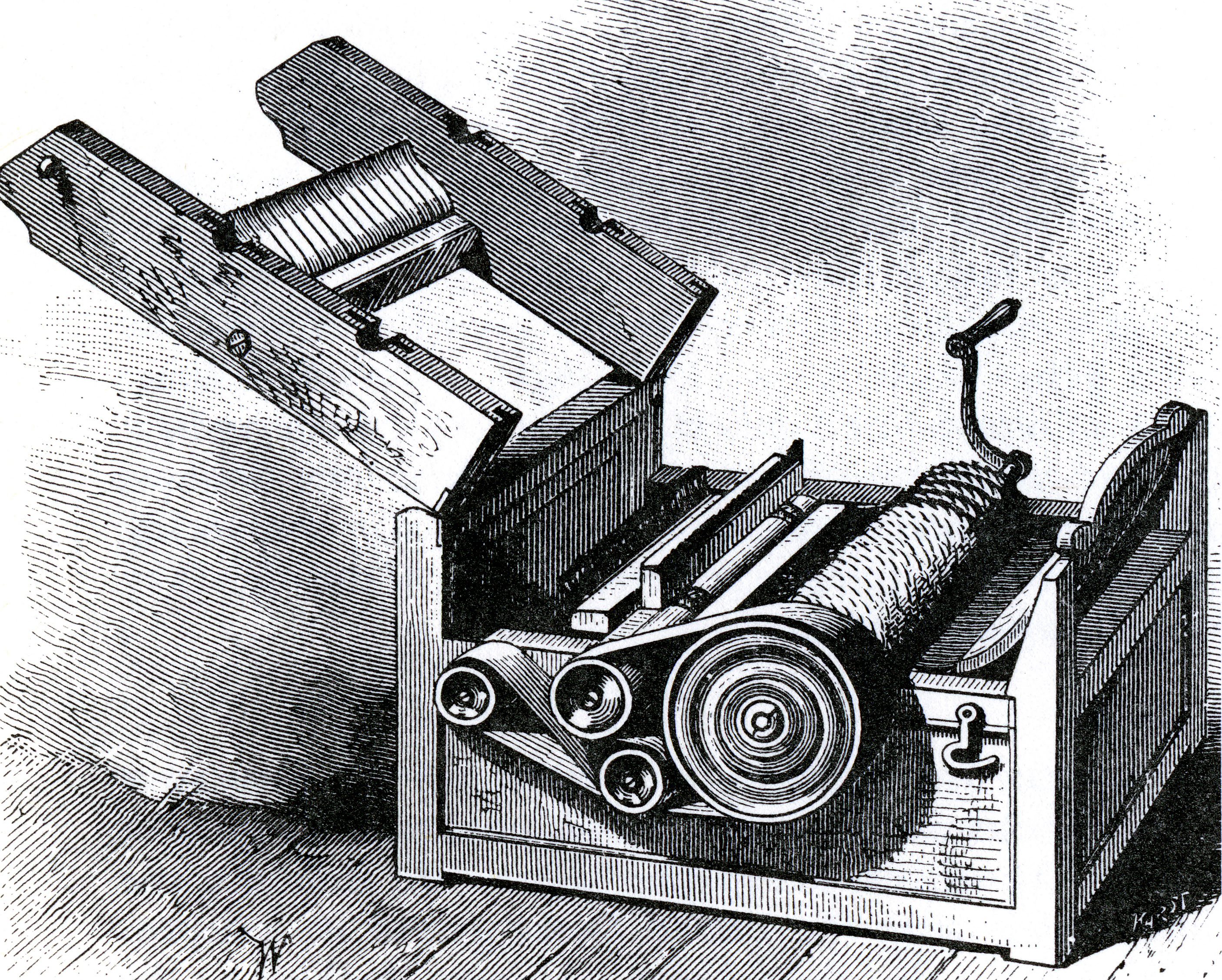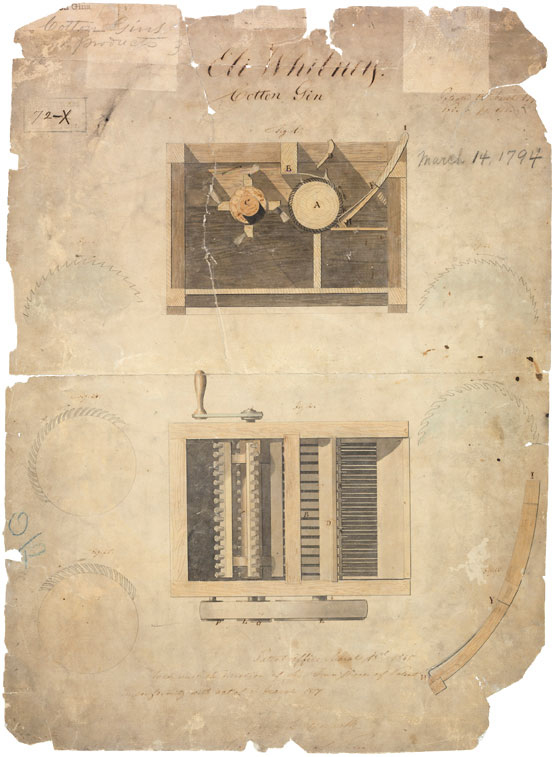Cotton gin is a machine for removing the seeds from cotton fibers. It is widely believed that the American inventor Eli Whitney produced the first cotton gin. However, simple cotton gins were first used in India during the 400’s. A version of these gins, the roller gin, had reached the American Colonies by the 1740’s. In 1793, Whitney invented a faster, cheaper way of separating cottonseeds from the fibers. His cotton gin helped make the United States the world’s leading cotton grower.

Roller gins consisted of a pair of grooved wooden rollers that pressed the seeds from the cotton. These gins could remove the seeds from a variety of cotton called long-staple. But roller gins did not work as well with the short-staple cotton commonly grown in the American South. Because it took one person a full day to separate the seeds from a pound (0.45 kilogram) of fiber, farmers only raised short-staple cotton on small plots.
Whitney’s cotton gin could remove the seeds from short-staple cotton. As the gin’s crank turned, a cylinder covered with rows of wire teeth revolved. The teeth drew the cotton through slots so tightly spaced that the seeds could not enter. A roller with brushes then removed the cotton fibers from the teeth and deposited them in a hopper. Whitney’s larger gins could process as much cotton in a day as could 50 people working by hand. Southern planters soon improved upon Whitney’s design by replacing the wire teeth with circular blades, and short-staple cotton quickly became a cash crop.

Today, the term cotton gin refers to the entire mechanical system that dries, cleans, removes the seeds, and bales the cotton. The specific machine that removes the seeds from cotton fiber is a gin stand.
